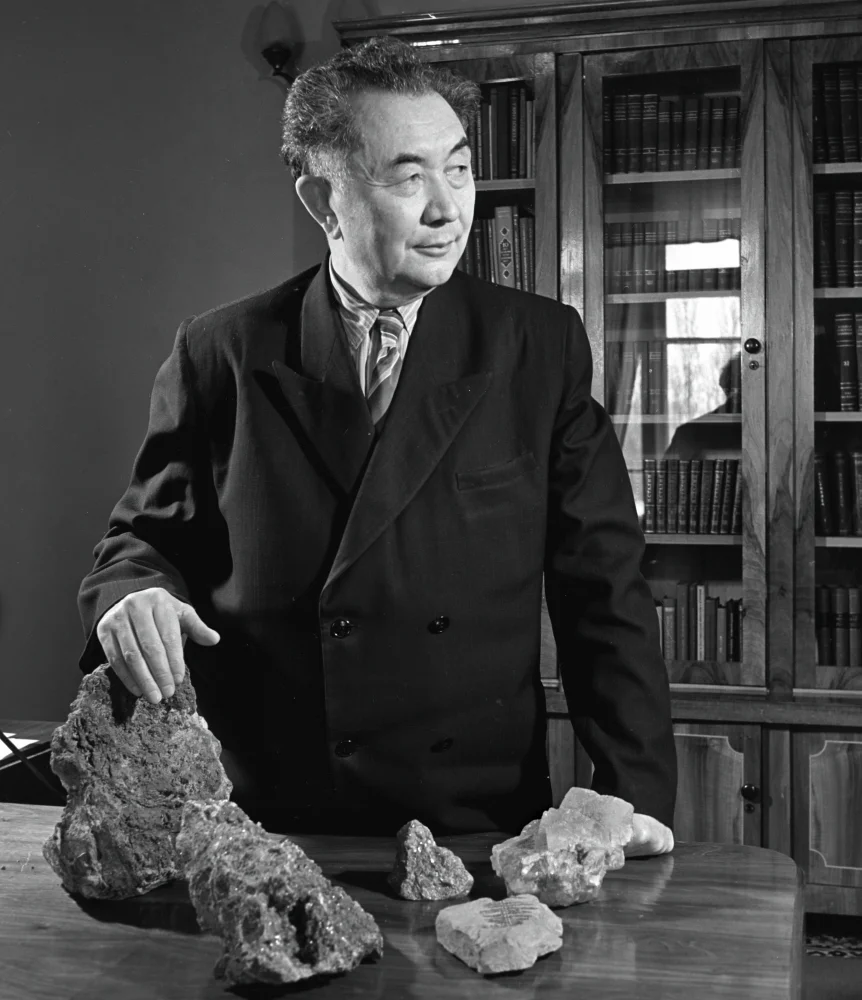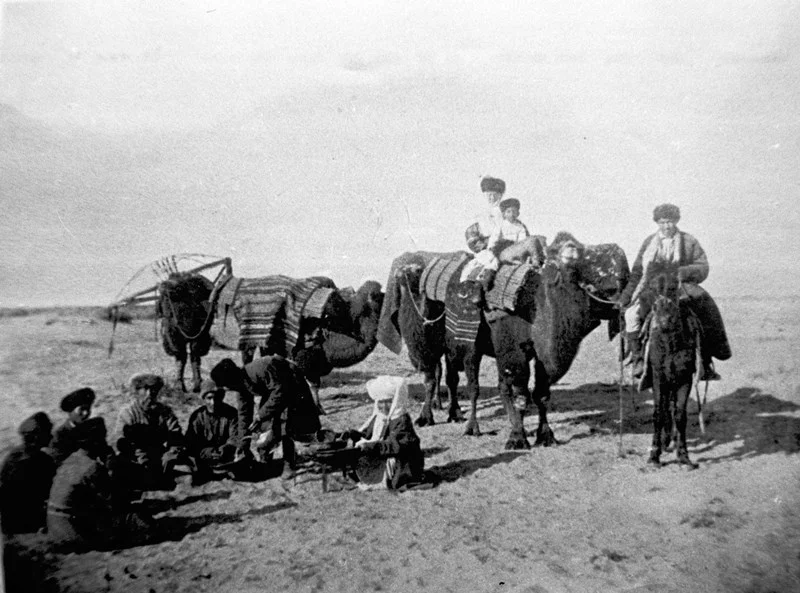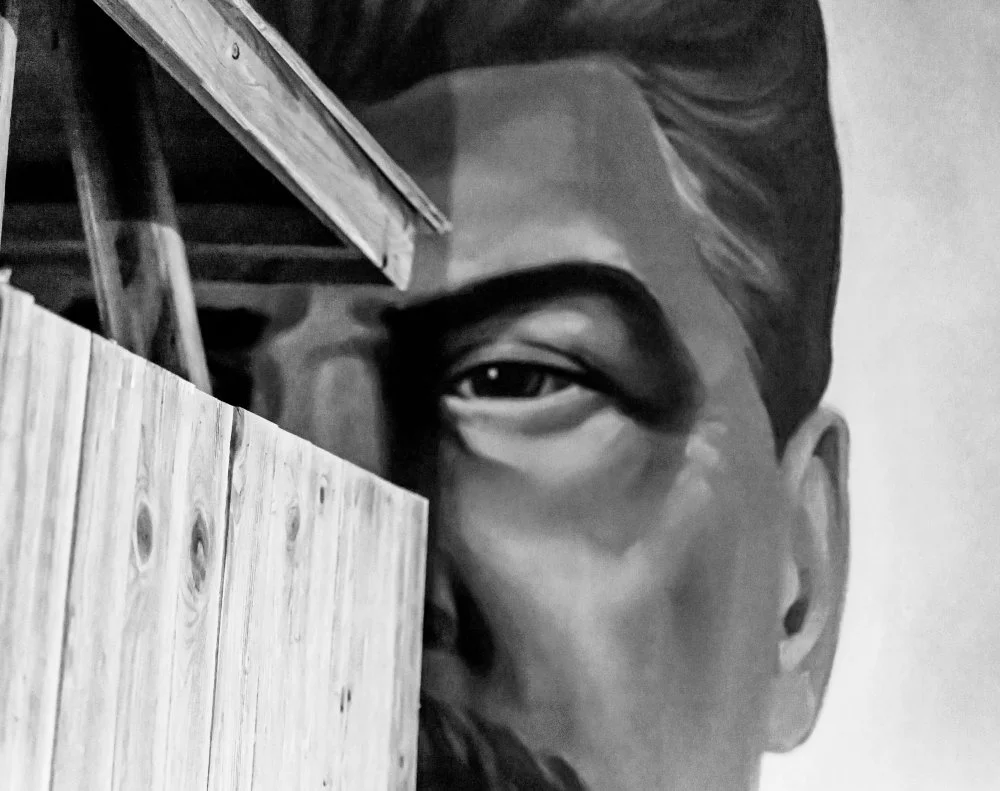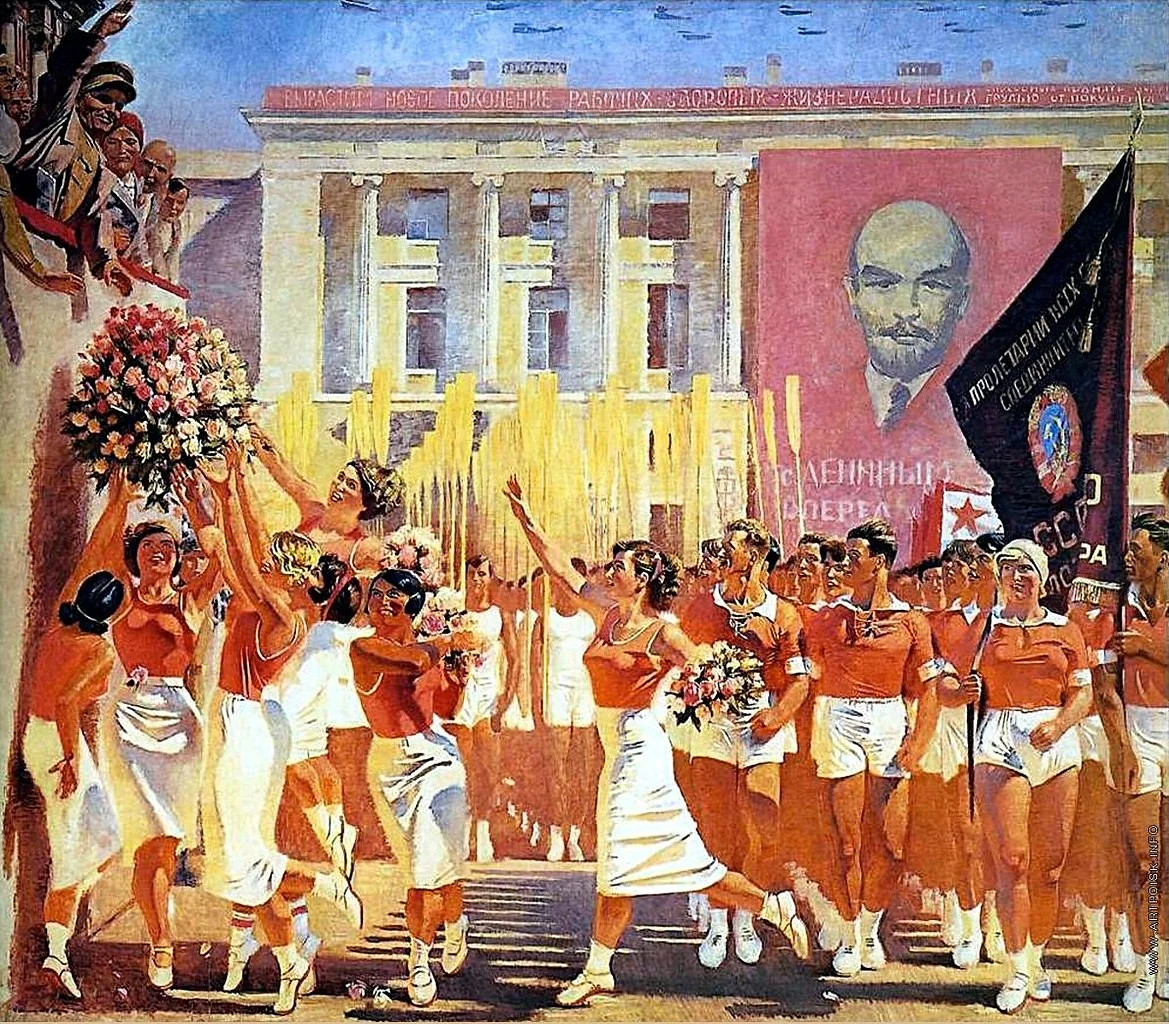Repressions in the Soviet Union are traditionally associated with Joseph Stalin, but this does not capture the broader reality of what took place across the Soviet Union. Repression was a foundational pillar of the regime from the very beginning. Professor Zauresh Saktaganova identifies and sheds light on the meanings and mechanisms of repression, aiming to assess the extent of its impact through Kazakhstan's history, spanning various stages of persecution.
THE NATURE OF REPRESSIONS
The establishment of the totalitarian system in the Soviet state was accompanied by political repressions that were systemic, planned, and extensive; they were unprecedented in scale and affected all groups of the population. It is a mistake, however, to think that repressions were part of only Stalin’s policies. They began long before he seized absolute power in the late 1920s and did not end after his death in 1953. The ideological basis of the program of repression was initially based on Lenin’s thesis on red terror as a response to white terror, and later on Stalin's theory of the intensification of the class struggle with the strengthening of socialist society. He formulated this theory on 9 July 1928 at the plenum of the Central Committee of the All-Union Communist Party of the Bolsheviks in a speech titled ‘On Industrialization and the Bread Problem’:i

From the very beginning, repression in the Soviet state became the main method of vying for power, leading to the physical destruction of not only real but also potential or imagined rivals and opponents. The punitive actions carried out by the state authorities in the Soviet Union were used primarily to create a society ruled by fear. Action (or inaction) was in no way commensurate with the degree of punishment. The classes that did not fit into the vision of the communist future, the social groups that resisted, demonstrated dissent against the authorities, or were only capable of such dissent, were punished or destroyed. Finally, at the height of the terror, repressive policies made it possible to move large numbers of people to labor camps in sparsely populated areas of the country without additional investment. This allowed for unpaid, forced labor to be used to solve major socio-economic problems.
Even after the mass repressions of Lenin and Stalin ended, dissent or even mere independence of judgment continued to be persecuted. The British novelist George Orwell wrote: ‘The totalitarian state tries, at any rate, to control the thoughts and emotions of its subjects at least as completely as it controls their actions.’ Throughout its history, the main goal of the repressive machinery of the Soviet state was the control of the freedom of thought and feelings of ‘Homo Sovieticus’.

The peasants of Pavlodar in the early 20th century / D. Bagaev House-museum, Pavlodar
Even now, no expert has been able to estimate the exact, or even an approximate, number of victims of political repression in Kazakhstan from the 1920s to the 1980s. According to the materials of the Ministry of Internal Affairs of the Soviet Union, from 1921 to the beginning of 1954, a total of 3,777,380 people were convicted of counterrevolutionary crimes by various bodies including the OGPU Collegium, the Special Council, the Military Collegium, NKVD troikas, courts, and military tribunals. Among them, 642,980 prisoners were sentenced to death.i

STAGES OF POLITICAL REPRESSION IN KAZAKHSTAN
The first stage of repression began shortly after the Bolshevik seizure of power, from October 1917 to the mid-1920s, against the national intelligentsia associated with the activities of national parties (Alash, Shura-i-Islam, et cetera) and the governments of national autonomies (Alash Orda, Turkestani Mukhtoriat, et cetera). Notable figures subjected to this repression include Alikhan Bukeikhanov, Ahmet Baitursynuly, Mirjaqyp Dulatuly, Khalel Dosmukhameduly, and Jakhansha Dosmukhamedov. During this period, the authorities succeeded in isolating themselves from Kazakh society, depriving the most educated, politically mature, and active part—the elite of the national intelligentsia—of its influence. First, members of this group were squeezed out of power and forced to engage in cultural, educational, and scientific pursuits such as teaching at universities or research institutes or contributing to newspapers and magazines. A few years later, the next step was to isolate and remove them from the social environment by employing tactics such as house arrest, exile, and imprisonment. By the mid-1920s, the ‘old’ (pre-revolutionary) national intelligentsia, which had the greatest influence on the minds and moods of Kazakh society in the first quarter of the twentieth century, had been eliminated.

Leaders of the national-democratic Alash party. From left to right: Akhmet Baitursynuly, Alikhan Bukeikhanov, and Mirjaqyp Dulatuly / CSA FPDSR, Almaty
The second stage involved the repression of both the Communist Party and the Soviet elite. This targeted the ‘old’ Bolsheviks who had initially established Soviet power in Kazakhstan along with the ‘new wave’ of communists from the Soviet national intelligentsia. This latter group, representing the ‘younger generation’, had opposed Filipp Goloshchekin, the first secretary of the Kazakh Committee of the All-Union Communist Party of Bolsheviks, during his ‘Little October’ period in the mid-1920s and early 1930s.
This period of repression included the persecution and arrests of many well-known people such as Saken Seifullin, Turar Ryskulov, Smagul Sadvokasov, Sultanbek Khodzhanov, and Seitkaly Mendeshev. These representatives of the Kazakh Soviet intelligentsia tried to prevent or stop the implementation of socialist transformations in Kazakhstan by using methods similar to those employed by Goloshchekin. They anticipated the outcomes of this policy and warned of the catastrophe that could unfold in the Kazakh steppe if the specifics and peculiarities of the traditional nomadic economy of the Kazakhs were not taken into account. The opposition of this group of the national party and Soviet elite to the first party leader of the region, Filipp Goloshchekin, resulted in a significant backlash from both Goloshchekin and the central authorities. As a result, in the mid-1930s the dissenters were either sent to prison or exile.
The third stage was the repression of the peasantry, primarily targeting the affluent members such as the kulaks, Kazakh bais, and moderately prosperous peasants during the period of total collectivization and forced sedentarization in the late 1920s and early 1930s. This period of repression, during which the efforts to eliminate the kulaks and bais as a class developed and intensified, allowed the authorities to carry out their ‘Great Break’ agenda. Their aim was to ‘break the backbone’ of the peasantry, to destroy the strongest, most economically viable, and therefore most influential part of the agrarian population. It was during this time that Asharshylyq (the Great Famine), unfolded in Kazakhstan, a disaster long foretold by members of the Soviet Kazakh elite including Turar Ryskulov, Smagul Sadvokasov, Sultanbek Khodjanov, and others.
According to some Kazakh researchers, targeted Bolshevik starvation and disease killed about 2 million Kazakhs. The most influential opposition to the authorities in the agrarian sector were the wealthy classes living in the auls and villages of Kazakhstan, and it was toward their destruction that the full force of the Soviet repressive machine was directed. The scale of this ‘class onslaught’ indicated that the state already had a sufficiently effective repressive apparatus. A number of scholars refer to this phase as the ‘Bolshevik social genocide’.i

Painting dedicated to the victims of famine in Kazakhstan. KarLag Museum, Kazakhstan. 1930s / Alamy
The fourth stage was the repression of engineers, technicians, and workers in industrial enterprises on charges of ‘sabotage and subversion’ in the 1930s—the Ridder case and the Balkhash case are some examples of this. At this time, representatives of the technical intelligentsia—engineers and workers— who exhibited independent thinking were subjected to repression. They were accused of being 'Japanese-German agents', 'counterrevolutionary organizations', 'Trotskyists', 'rightists', 'nationalists', and part of other 'spy gangs'. Lev Zalin, the People’s Commissar for Internal Affairs of Kazakhstan (who was himself executed in 1940), justified this round of repression in his speech in June 1937: ‘The main line of subversive work is political, economic, and military espionage, sabotage of our industry, transportation, agriculture, and livestock; preparation for terror … We, especially the Cheka officers, are faced with the task of uncovering and finally defeating everything that has remained undiscovered among the Japanese-German agents, all kinds of fascist, Trotskyist, right-wing, counterrevolutionary, nationalist organizations…’ Under the same pretext, the cadres of the technical intelligentsia were purged. Cases of sabotage were filed against individuals in the management of the largest construction sites and enterprises of Kazakhstan such as Y. Mikhailenko, P. Spiridonov, A. Kelmanson, M. Grolman, P. Poddubny, N. Prasolov, and many others. The result of repressions of this stage were arrests, imprisonments, and executions.

Wall slogan "Soviet power does not punish, but corrects". KarLag Museum, Kazakhstan/Alamy
The fifth stage was the ‘Great Terror’ or the repressions of 1937–38, which served as the culmination and logical conclusion of all the previous waves of repression. This period marked the physical annihilation of all those who were in any way opposed to the authorities or who got caught in the gears of the repressive mechanism. At this stage, all those who had been repressed in earlier stages and survived were repressed again, but now their alleged crimes were severe enough to warrant facing a firing squad.
The harbinger of the mass shootings during the repressions of 1937–38 was a secret letter of the Central Committee of the All-Union Communist Party of the Bolsheviks dated 29 July 1936. This letter took to the extreme, to a point of absurdity, the demand to expose and eliminate any existing shortcomings ‘in terms of vigilance and inability to recognize the enemy’. In the same year, the Kraikom decided to ‘mercilessly expose all enemy nests of fascists, Trotskyite Zinovievites, spies, scouts, saboteurs, Alash-Orda members and other nationalist elements’. The directive was that ‘the work of exposing the enemies and their accomplices should be carried out daily by all party organizations and every communist … in every place and in every situation’.i
For example, when considering the activities of a ‘counterrevolutionary nationalist group’ during the construction of the Karaganda State District Power Plant, a meeting of the Bureau of the Karaganda City Committee of the Party in 1937 noted that the group’s task was ‘to spread counterrevolutionary agitation against Soviet power by holding closed evening meetings where anti-Soviet speeches were made and counterrevolutionary nationalist songs were sung’. The second charge of singing ‘counterrevolutionary nationalist songs’ was considered serious grounds for expulsion from the party and for the case to be referred to law enforcement authorities.i
During the repressions of 1937–38, between 80 to 100 per cent of the leading officials of republican, regional, city, and district parties and Soviet bodies, including law enforcement bodies like the NKVD, were thrown into prisons and then executed.

Kanysh Imantaiuly Satbayev / Joseph Budnevich/RIA Novosti
The sixth stage was the repressions of the 1930s and 1940s, associated with the deportation of various ethnic groups, including Poles, Koreans, Germans, Chechens, Ingush, Crimean Tatars, Meskhetian Turks, et cetera, to Kazakhstan. The forced expulsion of peoples at that time was unprecedented even in the Soviet Union. Hundreds of thousands of people were expelled from their homes with barely twenty-hour notice on indiscriminate charges, and tens of thousands of them died during the deportation.
According to the OGPU, in 1932–33 alone, 55,441 people died in Kazakh special settlements. In 1933, in northern Kazakhstan, 19 times more oppressed citizens died in exile than were born, and in southern Kazakhstan, this was 13 times greater than the number of citizens that were born.i

The seventh stage was the repression of the postwar decade from the mid-1940s to the mid-1950s, The sixth stage was the repressions of the 1930s and 1940s, associated with the deportation of various ethnic groups, including Poles, Koreans, Germans, Chechens, Ingush, Crimean Tatars, Meskhetian Turks, et cetera, to Kazakhstan. The forced expulsion of peoples at that time was unprecedented even in the Soviet Union. Hundreds of thousands of people were expelled from their homes with barely twenty-hour notice on indiscriminate charges, and tens of thousands of them died during the deportation.
Among the most notable members of the national intelligentsia who fell under Stalin’s postwar repression included Ermukhan Bekmakhanov, Begezhan Suleimenov, Qaiym Mukhamedkhanov, Esmagambet Ismailov, Mukhtar Auezov, and Kanysh Satpayev.
The postwar situation, as researchers have noted, brought about changes in sentencing practices. Judicial bodies applied the death penalty less often than in the 1930s, and sentences with long imprisonment terms were handed down instead. The materials of the State Archive of the East Kazakhstan region show that in the postwar decade, 41 per cent of the repressed were sentenced to ten years of imprisonment, 31 per cent to five years, 22 per cent to eight years, 3 per cent to twenty-five years, 2 per cent to fifteen years, and 1 per cent to twelve years. The majority of the individuals subjected to political repression (91 per cent) were accused of ‘anti-Soviet and counterrevolutionary propaganda’. In the postwar period, this phrase was used to describe anyone who, in the opinion of the authorities, could threaten the state system by their words or actions.i
The eighth stage was the repression, from the mid-1950s to the mid-1980s, of all ‘dissidents’, which included creative intellectuals, scientists, the Party and Soviet elite, and people from other social strata. Stalin’s death and the thaw implemented by Khrushchev significantly weakened Soviet repressive policies, but fear remained the main tool for consolidating the regime. Repression was no longer applied indiscriminately on the basis of social, ethnic, or class lines, but it was undertaken individually, and its methods were ‘softened’. Instead of using firing squads, people faced imprisonment, forced treatment in psychiatric hospitals, expulsion and exile from the Soviet Union, and so on.

Nomads. Akmola region, Kazakhstan/Archive of Nurmukhamed Imamov
The ninth stage was the repression of the second half of the 1980s. Despite Mikhail Gorbachev’s proclamation of a new, more liberal domestic policy, the participants in the events of December 1986 were brutally persecuted. Like a merciless hammer, the Soviet repression machine crushed the lives and fates of those who protested against the system. In December 1986, over 2,500 individuals experienced various forms of harm, including being taken to medical facilities, hospitalized, or injured, due to the Interior Ministry's Operation Blizzard in Kazakhstan. Law enforcement bodies arrested about 8,500 people, of whom 103 were sentenced, more than 800 people were expelled from Komsomol (Young Communist League), and more than 300 students were expelled from universities in the republic.i
Much has been said and written about the events of December 1986, but even today many aspects remain unexplained. The demonstrations spread across Kazakhstan, and the events of December 17–18 were found in one way or another in all sixteen regions of the republic.
MECHANICS OF REPRESSION
All stages of repression were characterized by a number of common features. In the first stage of implementation, intensive political and ideological preparations were made. Well-known people, who often enjoyed great prestige amongst the population, or in a region or province, were pressured by the system. As a rule, the most prominent and enterprising people, those who had their own opinions and were able to defend them, fell prey to the repressive machine. The more prominent the victim, the more absurd the accusations against them. Moreover, the initiation of a fresh cycle of repression was often bolstered by significant sociopolitical or economic measures undertaken by the state and vice versa.

Portrait of Stalin watching. KarLag Museum, Kazakhstan / Alamy
The forms and methods of repression changed according to the sociopolitical situation. In the early 1920s, there was still some room for the freedom of debate, the possibility of discussion, and the exchange of ideas, despite repressive measures such as expulsion from party and state roles, isolation, and loss of political and civil rights. However, by the late 1920s, during Stalin's 'Great Turn', an atmosphere of zero tolerance for dissent and opposition had developed, and repressive measures were intensified accordingly.
Enemies were sought among ‘elements alien to the Party and the people’, and a witch hunt ensued. Such elements were first found within the Party itself, in the ranks of the intelligentsia, and among all the dissenting citizens in the country. All of the Party, Soviets and law-enforcement bodies, public organizations, and the press were geared toward the immediate and strict implementation of the ‘leader of the people’s’ directive speeches. These directives were implemented through decisions made by the party’s governing bodies (congresses, plenums, conferences, the Politburo of the Central Committee), which served as the basis for similar decrees being passed by the republican and later local party bodies.i
The legal basis for mass repression was being prepared. Using data from Soviet legal acts, it is possible to trace how criminal legislation changed in the 1920s and 1930s and how the punishments for ‘anti-Soviet actions’ were intensified. The absolute majority of the repressed fell under Article 58 of the Criminal Code of the Russian Soviet Federative Socialist Republic (RSFSR), related to counterrevolutionary activities. In the 1926 RSFSR Criminal Code, Article 58 applied the death penalty—execution by firing squad—to twelve types of counterrevolutionary crimes out of seventeen. Since 1934, the changes in the criminal legislation have been systematic and more and more removed from a real legal basis. The time limit for investigating cases of terrorist organizations and terrorist acts against the Soviet power was set at a maximum of ten days. In 1937, NKVD bodies were officially allowed to use ‘physical methods of influence’—which is to say, torture was legalized—the possibility of appealing against sentences was excluded, and death sentences were carried out immediately.i

Installation of the investigator's office. KarLag Museum, Kazakhstan/Alamy
The road to Stalin’s mass repressions was opened wide by the decision of the Central Committee of the Party on 2 July 1937. This was followed by Operational Order No. 00447, signed by Nikolai Yezhov, the Commissar of Internal Affairs, according to which 268,950 people were to be repressed in the Soviet Union in four months. Of these, 75,950 were immediately murdered. However, this seemed insufficient, and the authorities authorized ‘counter-planning’ at the local level (republican and regional) with new numbers. On 3 December 1937, the Central Committee of the Party approved the proposal of the Central Committee of the Party of Kazakhstan to increase the number of people repressed by 600 in Category 1 (instead of 75) and by 1,000 in Category 2 (though no increase had been planned here). Category 1 included the ‘most hostile’ anti-Soviet elements to be executed, and Category 2 included those to be imprisoned in camps or prisons for eight to ten years.i
Another peculiarity of mass repressions was that they were often directly related to denunciations by fellow countrymen, neighbors, colleagues, enemies, and simply envious people. Often, mass repression was not only the result of the vigilance of NKVD bodies. In no small measure, they were caused by mass denunciations submitted to these organizations by ‘vigilant’ citizens. Denunciations arose as a consequence of policy: the authorities both anticipated and encouraged them, and subsequently, the authorities responded to them eagerly. Such denunciations played an important role in the birth of party directives. Without absolving Stalin's repressive system of responsibility, without justifying it, it is necessary to note that the study of repression overlooks this important circumstance in the complex collisions of repressive policies. We are sure that if there had not been such a flow of denunciations in Kazakhstan (it should be understood that the authorities and the NKVD provoked and encouraged them), the fate of several hundred (perhaps thousands of) people would have had a different, less tragic outcome. Unfortunately, for various reasons, this issue has not yet been studied in Kazakh historiography.
A number of the ‘political’ cases recorded in the archives are absolutely absurd. For example, students of the Almaty Pedagogical Institute received from two to seven years in camps with suspension of civil rights for creating the Association of Lovers of Drinks and Snacks (ALVIZ). This was created by the student youth of Almaty in February 1937, without assuming any consequences of such actions. They wrote a program, a charter, and distributed the roles among themselves—prime minister, minister of hack-tivities, goddess of love, et cetera. In the report of a member of the Special Collegium of the Supreme Court of the Kazakh Soviet Socialist Republic (SSR), it was noted with great indignation that ‘these twenty-year-old “ministers of hack-tivities” elected Sh., a twenty-seven-year-old woman weighing 80 kilograms, as their goddess of love’. ALVIZ members were accused of creating an anti-Soviet organization.i

Saule Suleimenova. "Jeltoqsan. Rise of the Kazakh youth. December 1986"
Archival documents also talk about isolated cases of exposing slander and bringing slanderers to justice. Kantarbaev, the OCPC controller for Kazakhstan, recorded a case in the Karaganda region (September 1938), when Party Member O. wrote a statement against another member named Smagulov, ‘accusing him of being the son of a bai’. The latter was expelled from the party. A later investigation revealed that ‘O. himself did not know Smagulov's father personally, but had heard from his mother-in-law about a bai Smagul who was blind in one eye’. Later in this document, more information appears: ‘Smagulov's father was not a bai and died in 1934 with two eyes, for which O. was reprimanded. Smagulov was reinstated in the party’.i
Today, despite the intensification of domestic research on the repressive policies and victims of political repression of Soviet totalitarianism, there is still no generalized data on the number of people subjected to political repression in the Kazakh SSR at all stages, nor is there complete information on all categories of repressed citizens. Many archival collections and cases dealing with seventy-four years of Soviet rule are still closed and classified.
In 2020, at the initiative of the president of the Republic of Kazakhstan, Kassym-Jomart Tokayev, the State Commission for Rehabilitation of Victims of Political Repression was established. Since then, working groups of Kazakh historians and lawyers have been formed to collect and study archival sources and other materials and to prepare conclusions for the meetings of the State Commission on the full rehabilitation of victims of political repressions. Work has begun on a new stage of rehabilitation: the declassification of archival documents. Only time will tell what the results of these efforts will be.
References
1. Бугай Н.Ф. Л. Берия — И. Сталину: «После Ваших указаний проведено следующее…». М.: Гриф и К, 2011. 510 с.
2. Депортированные в Казахстан народы: время и судьбы. А-А., 1998. 428 с.
3. Елеуханова С.В. Положение репрессированных в Казахстане // Реабилитация и память. Отношение к жертвам советских политических репрессий в странах бывшего СССР/ Сост. Рачинский Я. М: Международный Мемориал, 2016. С. 193–235.
4. Жанбосынова А.С. Государство, общество и политика (на примере Восточного Казахстана) //Казахстан: послевоенное общество 1946–1953 гг. Материалы Международной научно-практической конференции. А-А., 2012. С.23–31.
5. История Казахстана (с древнейших времен до наших дней). В пяти томах. А-А.: Атамура, 2010. 672 с.
6. Казахстан: послевоенное общество 1946–1953 гг. Материалы Международной научно-практической конференции. А-А., 2012. 324 с.
7. Оруэлл Дж. «1984» и эссе разных лет. М.: Прогресс, 1989. 384 с.
8. Политические репрессии в Казахстане в 1937–1938 гг. Сборник документов. А-А., 1998. 336 с.
9. Сактаганова З.Г. Политические репрессии в Казахстане в 1920–1980-е гг.: этапы, последствия и проблемы реабилитации// Отан тарихи. 2021. №3 (95). С.136–145. DOI 10.51943/1814-6961_2021_3_136
10. Советское общество: возникновение, развитие, исторический финал. Т.1 //под ред. Ю.Н.Афанасьева. М.: Российский государственный гуманитарный университет, 1997. 510 с.
11. Сталин И.В. Об индустриализации и хлебной проблеме. Речь 9 июля 1928 года на пленуме ЦК ВКП (б), 4–12 июля 1928 года // Сочинения, Т.11. М., 1952. С.170–171
12. Архив Президента Республики Казахстан (АП РК). Ф.141.Оп.1.Д.10599. Л.502–503.
АП РК. Ф.708. Оп.1. Д.2. Л.1–112.
АП РК. Ф.708. Оп.1. Д.53. Л.12.
АП РК. Ф.708. Оп.1. Д.53б. Л.4–5.
АП РК. Ф.811. Оп.23. Д.516. Л.1–110.
13. Государственный архив Карагандинской области (ГАКО). Ф.1п. Оп.67. Д.134. Л.1–142.
ГАКО. Ф.1п. Оп.63. Д.200. Л.1–144.
14. Государственный архив Российской Федерации (ГА РФ). Ф.9401. Оп.2. Д.450. Л.214.
